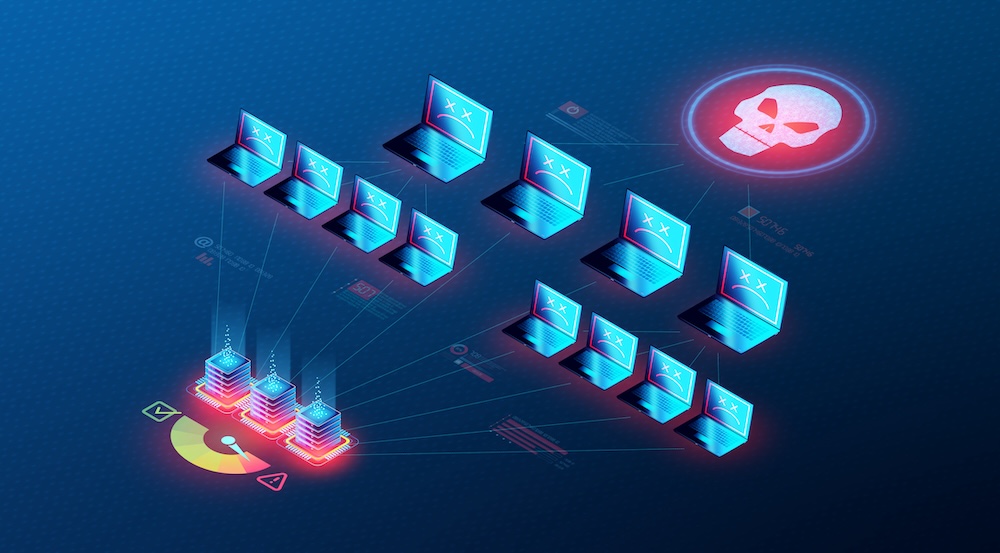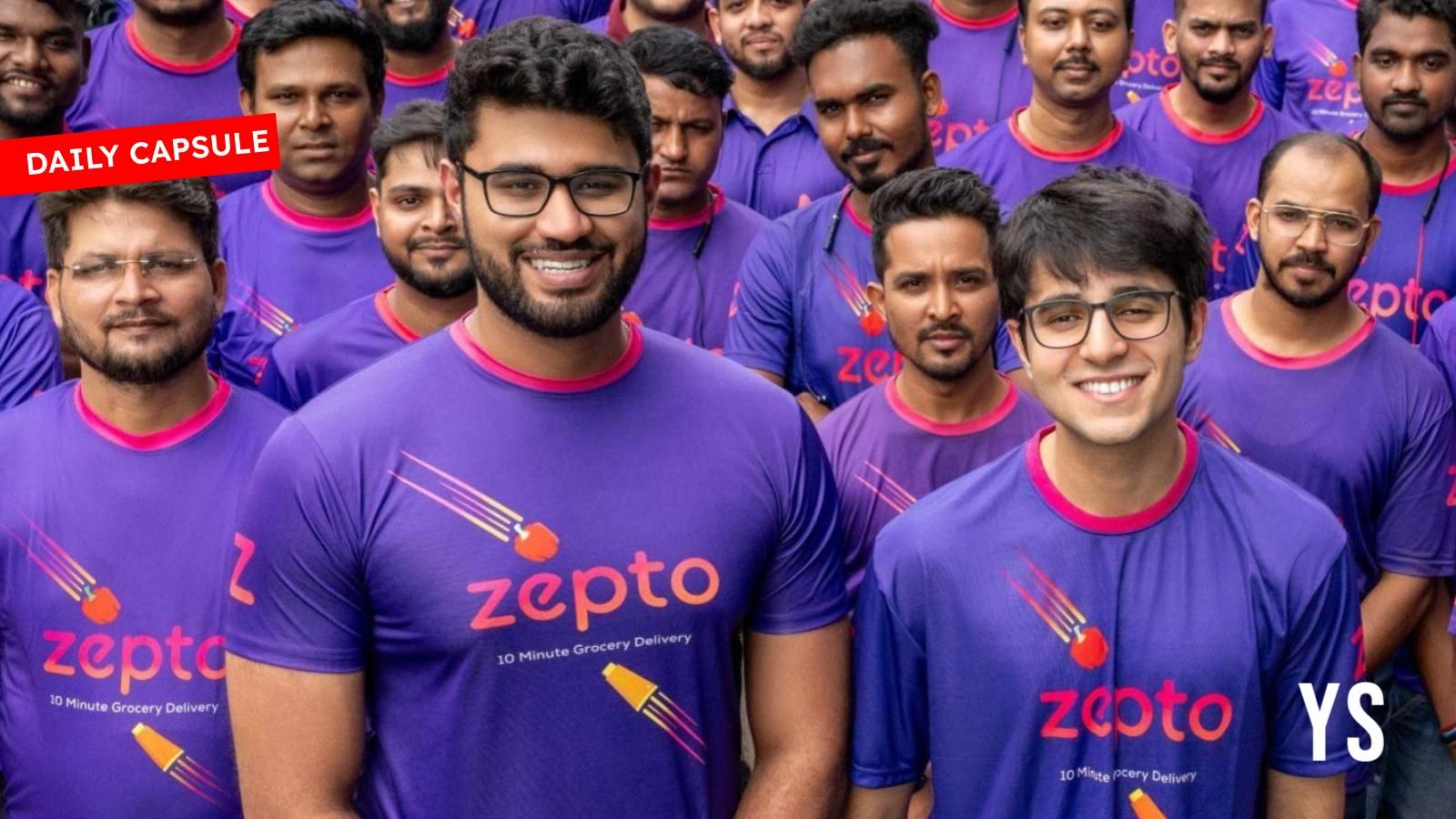In their own words: Microsoft leaders, past and present, on the company’s legacy and impact
What’s the significance of Microsoft in modern business and tech history? For the past several months, in the course of reporting GeekWire’s Microsoft@50 series, we’ve asked variations of that question in interviews and email exchanges with key leaders from the company over the years.… Read More

[Editor’s Note: Microsoft @ 50 is a year-long GeekWire project exploring the tech giant’s past, present, and future, recognizing its 50th anniversary in 2025.]
What’s the significance of Microsoft in modern business and tech history?
For the past several months, in the course of reporting GeekWire’s Microsoft@50 series, we’ve asked variations of that question in interviews and email exchanges with key leaders from the company, past and present.
Their answers provide not just a sense for Microsoft’s impact but also a blueprint for others looking to capitalize on major technological shifts.
As the company marks its 50th anniversary today, we’re sharing highlights from their responses, including perspectives from co-founder Bill Gates, former Microsoft CEO Steve Ballmer, and current CEO Satya Nadella, among many others. Continue reading for their thoughts.

— Ray Ozzie, who succeeded Gates as Microsoft’s chief software architect, said the company’s lasting impact came from setting clear technical boundaries that enabled broad innovation.
“Constraints can be empowering,” said Ozzie, a pioneering software leader who created Lotus Notes early in his career. “At a key moment in the industry, Microsoft put forth a key constraint — the Windows API — and showered developers with love and attention.”
“When paired with several other key constraints — the PC hardware design and the x86 [architecture] — Microsoft catalyzed then-unprecedented growth of the economy and of tens of thousands of businesses globally.”
“With a stable foundation,” he said, “innovation abounded.”

— Lisa Brummel, a former Microsoft executive who served as head of human resources and helped shape the company’s culture, said Microsoft’s lasting significance lies in its global reach and relentless customer focus.
“Microsoft was unique in bringing computing to the masses,” Brummel said. “Many companies had singular applications or features that were great and powerful. Apple certainly has an incredible consumer following but Microsoft truly did this at global scale.”
Brummel added, “As employees, we understood that we just had to be better – we had to be the best for everyone in the world. In my early days we were maniacal about it and we never wanted to let up for fear that someone would beat us.”

— Steve Ballmer, the former Microsoft CEO, said the company’s most profound contribution to modern business and society has been the democratization of computing — expanding access to technology not just for individuals but for businesses of all sizes.
“Did Microsoft make that happen? Abso-frickin-lutely. No question,” Ballmer said. “Microsoft changed the world.”
He pointed to Office 365, Azure, and other cloud services as part of that same legacy — pushing the frontier of productivity and shifting IT from a backroom operation to a central driver of business.
“If you really go right down to what’s absolutely unique,” Ballmer said, “it’s the democratization of computing.”

— Susan Hauser led global enterprise, finance, and commercial teams — serving for more than five years as corporate vice president of Microsoft’s Worldwide Enterprise and Partner Group — as part of her nearly 21-year career at the company.
“In my experience, bold thinking and a belief in people and ideas at Microsoft fueled groundbreaking advancements—from revolutionizing personal computing to leading the charge in cloud technology, AI, and accessibility tools,” she said.
“Beyond innovation, Microsoft has always championed technology as a force for good. I was fortunate to witness this firsthand throughout my career — whether it was an elementary school teacher using OneNote to unlock a dyslexic student’s ability to read, AI helping farmers improve crop quality and distribution, or the power of Azure Cloud in sharing and analyzing data to improve healthcare and eradicate diseases.”
“Over the years, the words may have changed, but the philosophy never did: we ate our own dog food, embraced our own technology, learned from it, and used it to make a real difference for people and businesses.”

— Satya Nadella, Microsoft’s CEO since 2014, said the company’s most enduring legacy is rooted in its original purpose: building technology that empowers others to build more technology.
“That was true in ’75, and that is true in ’25, and that will be true, I believe, in 2050,” Nadella said. “Technologies will come and go, but the idea that this company can stay relevant by producing technology so that more and more people around the world can create more digital technology … that, I think, is the core thread of Microsoft.”
[Related: Microsoft CEO Satya Nadella on the tech giant’s 50th anniversary — and what’s next]

— Trish Millines Dziko, a former Microsoft program manager and senior diversity administrator, has served for nearly 29 years as executive director of the Technology Access Foundation. She recently joined the Microsoft Alumni Network board of trustees.
“The most significant thing that sticks out for me is not what Microsoft created directly — even though they created some amazing software and hardware products — but all the companies and nonprofits started by former Microsoft employees,” she said.
“Microsoft revolutionized employee giving, which I believe led to employees knowing more about the communities they live in, and the power of individual philanthropy. Think about it, all these young folks all of a sudden making a lot of money, and the company encouraging them to give instead of just spending it on themselves.”
“Employees spent more time doing volunteer work and serving on boards of the nonprofits with causes that mattered to them. Eventually in the late 1990s, employees like me left the tech field to start nonprofits of our own.”
“By the early 2000s there was a bit of a boom of small tech companies started by former Microsoft employees. I’m talking about hundreds of companies! It almost became a rite of passage for anyone wanting to run their own company — work at Microsoft, make a big contribution to a product, network with other folks in the sector, dream up an idea for a product that Microsoft likely won’t create, then create a company of your own. That was the dot-com boom in the making.”
“Today, over 290,000 former Microsoft employees in 54 countries belong to the Microsoft Alumni Network where they continue to give to their communities/causes and support each other professionally. Now THAT’s a legacy to be proud of!”

— Charles Simonyi, the pioneering software architect who led the early development of Word, Excel, and other Office apps, said Microsoft’s achievement is its lasting leadership in an industry that has changed dramatically — and could have just as easily passed it by.
“This wasn’t automatic. It wasn’t a given,” Simonyi said. “A lot of work and a lot of difficult decisions had to be made.”
Simonyi returned to the company in 2017 with its acquisition of his startup Intentional Software. He credited Microsoft not only for its technical strengths, but for its ability to recognize and adapt to turning points — from personal computing to enterprise software, and now artificial intelligence.
Simonyi sees parallels between the early days of the internet and the emerging AI era — a period of broad experimentation that will eventually converge on lasting ideas and business models.
“I think Microsoft is again going to have this leading way of bringing AI to businesses in a way that makes business sense and creates a very positive feedback loop,” Simonyi said.

— Bonnie Ross, who worked at Microsoft for more than 33 years, including 15 years leading the “Halo” video game franchise, said the company’s legacy lies not only in its technological reach but in its evolution toward a more values-driven culture.
Ross joined Microsoft in 1989 as a college hire and was quickly given far more responsibility than she expected. In that era of business, few companies “would have given a young person the responsibility that we all got at Microsoft,” she said. “That was so unique for its time.”
Microsoft’s male-dominated culture was especially difficult to navigate, especially in the early years, Ross said. But as the company evolved, she said, the cultural transformation under Satya Nadella’s leadership was one of the most meaningful changes she witnessed at Microsoft.
“They’re not there all the way yet,” she said. “But Satya really came in and took a step back and said, who do we want to be? And he was the one that put it together. We need to be humble. We need to be customer-focused. We need to be curious. We need to think about growth mindset.”
Ross also praised Microsoft’s handling of ethical and policy issues, particularly around the use and protection of data, and the continuation of its DEI programs in the face of shifting political winds.

— Brad Silverberg, who led the development of Windows in the 1990s, said Microsoft’s significance lies in how it turned computing into a mainstream, global force, benefitting from good timing.
He recalled the early 1990s as the “rocket years,” when Microsoft became a true driver of mass-market computing. The launch of Windows 95, he said, marked a cultural shift: “It was like going to a rock concert.”
Just as Microsoft ultimately embedded the internet into everything, it’s now aiming to infuse artificial intelligence across its applications, giving users new ways to access and capitalize on AI advances.
“That’s when you know you have something really powerful and really exciting,” Silverberg said, “when it gets used in ways the inventors never imagined.”

— Steve Wood, one of Microsoft’s earliest engineers, who also served as general manager, said the company’s most primary impact in that era was shifting the focus of the tech industry from hardware to software.
“That was completely unpredictable to most people and inconceivable at the time,” in the hardware-dominated world at the time, he said.
Wood said Microsoft’s timing, leadership, and focus enabled it to concentrate and accelerate that shift. “Of course the technology was going to happen,” he said, but Microsoft was “in the right place, at the right time — and persistent enough to actually drive it all.”
[Related: Standing up for Microsoft: Recognizing the company’s employees, back to one of its first.]

— Julie Larson-Green, a longtime Windows and Office engineering and design leader, and former Microsoft Office chief experience officer, said the company’s legacy is grounded in making technology “more accessible, intuitive, and powerful — shaping the way we work, create, and connect.”
“From bringing personal computers into our homes with Windows to making Office a go-to for productivity, it’s been at the heart of modern life,” she said. “Whether you’re collaborating on Teams, building something amazing on GitHub, or just getting through your inbox, chances are Microsoft has helped make it happen.”
“I spent 25 years at the company, and it was an incredibly fun and rewarding ride. Nonstop learning, creative problem-solving, and working alongside some of the smartest and most talented technologists, designers, and product thinkers out there. It was an honor to be part of a team that made technology more accessible and easier to use for billions of people.”

— Steven Sinofsky said the secret to Microsoft’s early success was that it didn’t just build technology, but enabled entire ecosystems. The former Windows president also ran Office and served as Bill Gates’ technical assistant, among other roles, during his 23 years at the company.
Sinofsky compared the rise of PC software to the Apollo-era space race and the iPhone revolution — moments of massive scaling that shifted the world.
“Microsoft created a new level on the stack,” Sinofsky said. “So instead of buying a computer where the assumption was you had to program it to do anything, you could get programs from other people, and not just that — you could make a living doing it.”

— Mark Zbikowski, one of Microsoft’s earliest software architects, said the company’s enduring contribution has been its ability to make technology approachable — and genuinely useful.
For every new technological advancement — from 16-bit processors to networks to multi-processors to AI — Microsoft made complex technology concrete and usable, helping people solve real problems.
“The technology isn’t an end in and of itself,” Zbikowski said. “It’s a means to an end, which is helping people with their lives.”

— Bill Gates, co-founder of Microsoft, said the company’s strength comes from its long-term vision for software.
“It’s kind of this miraculous thing,” he said.
In the early days of the PC revolution, computing was becoming effectively free, when compared to the time-share systems on which Gates and Microsoft co-founder Paul Allen originally learned to program. That opened the door to vast opportunities for developing software.
“Now what’s happening is intelligence is becoming free,” he said, “and that’s even more profound than computing becoming free.”
Gates, who continues to advise Nadella and Microsoft’s product teams, said the pace of innovation in this new era “will have to be very, very fast … and these tools will just improve very rapidly.”
“I hope Microsoft can lead the way,” he said.
[Related: Bill Gates on Microsoft at 50, and what’s next for AI and innovation]
GeekWire Contributing Editor Alan Boyle contributed to this report.
Sponsor Post
 Accenture proudly joins GeekWire in recognizing Microsoft’s 50th anniversary, marking over 35 years as a trusted partner and change driver.
Accenture proudly joins GeekWire in recognizing Microsoft’s 50th anniversary, marking over 35 years as a trusted partner and change driver.
As the 2024 Partner of the Year in Business Transformation for Copilot, our unique alliance with Microsoft and Avanade positions us to reimagine the industry and reinvent the future through the revolutionary impact of AI. Together, we are partners in change.
Click for more about underwritten and sponsored content on GeekWire.






















































.jpg)
%20Abstract%20Background%20112024%20SOURCE%20Amazon.jpg)



















































































































![[The AI Show Episode 142]: ChatGPT’s New Image Generator, Studio Ghibli Craze and Backlash, Gemini 2.5, OpenAI Academy, 4o Updates, Vibe Marketing & xAI Acquires X](https://www.marketingaiinstitute.com/hubfs/ep%20142%20cover.png)
































































































































![From drop-out to software architect with Jason Lengstorf [Podcast #167]](https://cdn.hashnode.com/res/hashnode/image/upload/v1743796461357/f3d19cd7-e6f5-4d7c-8bfc-eb974bc8da68.png?#)





































































































.png?#)





.jpg?#)
































_Christophe_Coat_Alamy.jpg?#)











































































































![Rapidus in Talks With Apple as It Accelerates Toward 2nm Chip Production [Report]](https://www.iclarified.com/images/news/96937/96937/96937-640.jpg)









































































































































